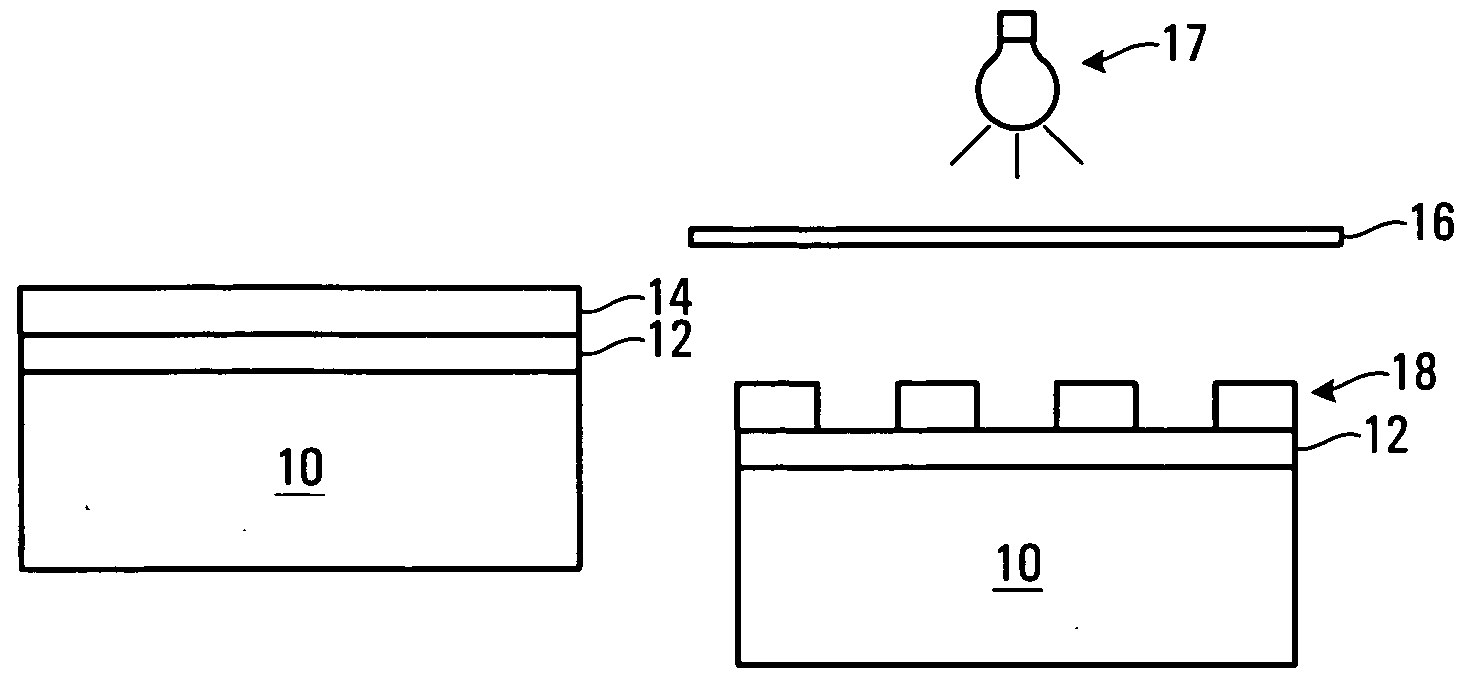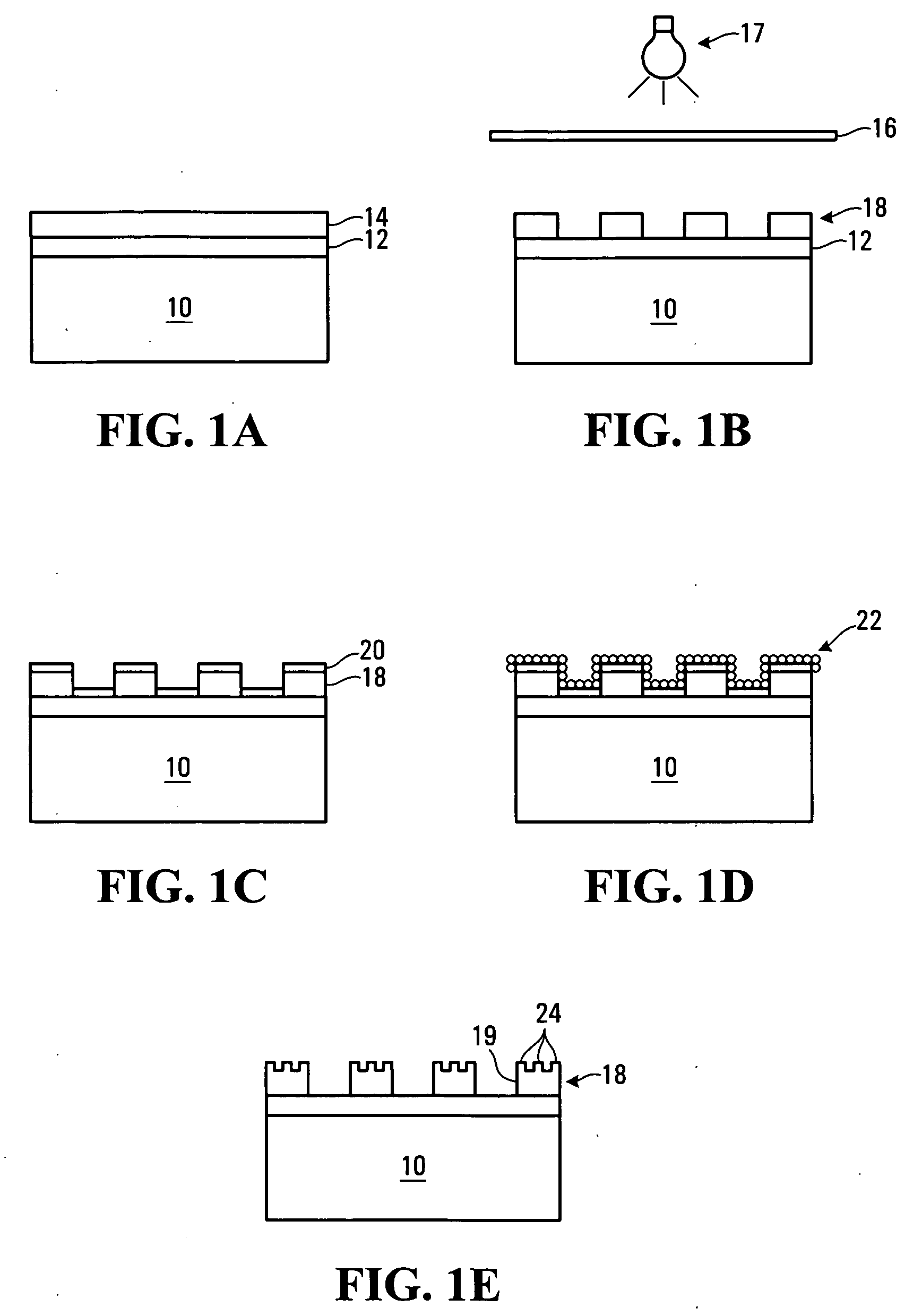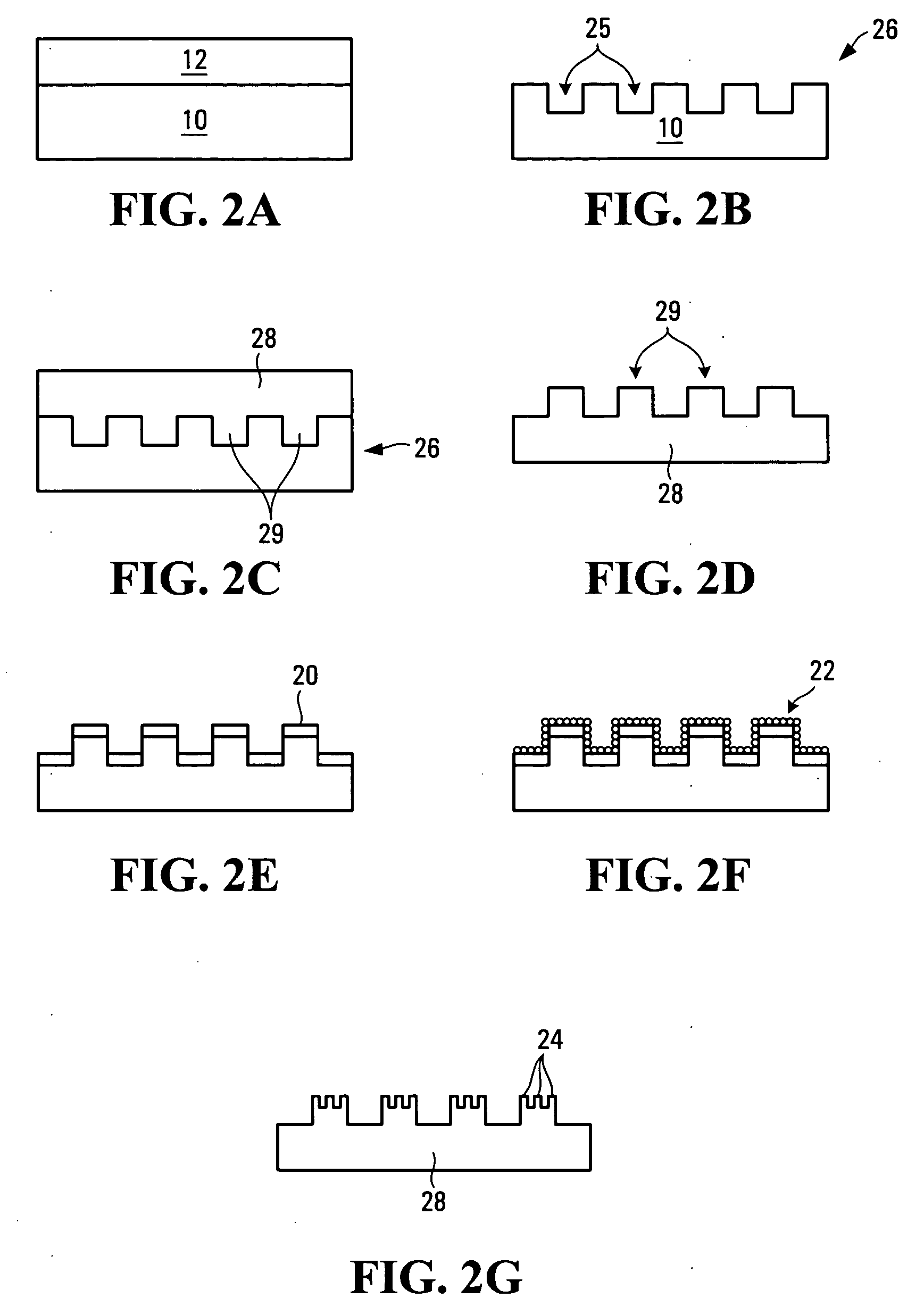Method of forming branched structures
a branched structure and branched technology, applied in the field of branched structure fabrication, can solve the problems of low throughput, nano-molding and electron beam lithography are not suited for large-scale production of synthetic adhesives, and have not been fully understood or exploited, and achieve the effect of promoting the adsorption of colloidal particles
- Summary
- Abstract
- Description
- Claims
- Application Information
AI Technical Summary
Benefits of technology
Problems solved by technology
Method used
Image
Examples
example 1
[0018] A 70-100 μm thick epoxy-based negative photoresist sold under the identifier, SU-8 2050 by MicroChem. Corp., was spun on a four inch silicon p-wafer. An HMDS adhesion promotion layer was deposited by vacuum priming. The photoresist was soft baked on a hot plate at 65° C. for ten minutes and 95° C. for an hour to evaporate the solvent. A chromium (Cr) on glass mask with a patterned emulsion of film on one side was aligned with the photoresist, thus forming a coated wafer.
[0019] The coated wafer was left to cool down to room temperature and then exposed to ultra-violet radiation at 365 nm with a dose of 400 mJ / cm2 for 70 seconds. A post-bake exposure was performed on the hot plate at 50° C. for ten minutes and 95° C. for 30 minutes to selectively cross-link the exposed regions of the photoresist. PGMEA as supplied by MicroChem. was used for development. The resulting microstructures were alternately immersed into a polyelectrolyte solution made of polycation such as poly(diall...
PUM
| Property | Measurement | Unit |
|---|---|---|
| diameter | aaaaa | aaaaa |
| diameter | aaaaa | aaaaa |
| thickness | aaaaa | aaaaa |
Abstract
Description
Claims
Application Information
 Login to View More
Login to View More - R&D
- Intellectual Property
- Life Sciences
- Materials
- Tech Scout
- Unparalleled Data Quality
- Higher Quality Content
- 60% Fewer Hallucinations
Browse by: Latest US Patents, China's latest patents, Technical Efficacy Thesaurus, Application Domain, Technology Topic, Popular Technical Reports.
© 2025 PatSnap. All rights reserved.Legal|Privacy policy|Modern Slavery Act Transparency Statement|Sitemap|About US| Contact US: help@patsnap.com



